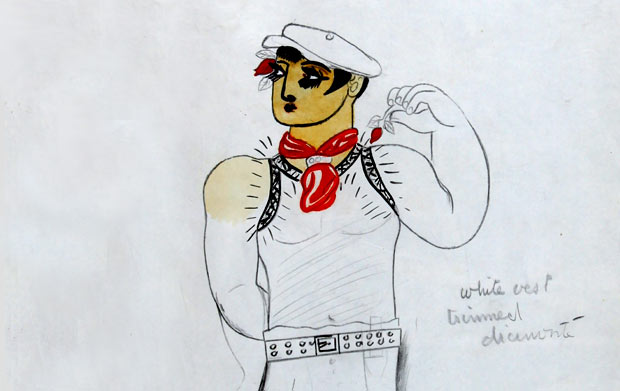
From James L. Gordon Collection and ©. (Click image for larger version)
www.fryartgallery.org
An Outbreak of Talent Exhibition – pdf
Obscurer corners of early British ballet are connected in the exhibition An Outbreak of Talent, at the Fry gallery in Saffron Walden, Essex until June 30.
William Chappell, whose designs bookended the career of Frederick Ashton – fondly remembered for Les Patineurs, less so for the original glittery Rhapsody – is revealed here in ballets now largely forgotten. A shockingly shocking pink panniered dress for Lydia Lopokova in Follow Your Saint: The Passionate Pavane, choreographed and designed in 1930 by Chappell with a Constant Lambert arrangement of John Dowland, derives from the Bakst costume Lopokova wore in Massine’s Les Femmes de bonne humeur – and the prevailing influence of the Ballets Russes.

From James L. Gordon Collection and ©. (Click image for larger version)
Recognisably after Manet, is Chappell’s barmaid from Ninette de Valois’ Folies-Bergère-inspired ballet. A pen and ink drawing of an ethereal Alicia Markova as Giselle and a design for an inky-blue Albrecht, daintily holding cloak and lilies, with acres of eye shadow – a look adopted by Anton Dolin and Robert Helpmann – evoke the Vic-Wells Ballet of 1935.

From James L. Gordon Collection and ©. (Click image for larger version)
Designer of several Helpmann ballets, Edward Burra is represented by Ashton’s 1931 Rio Grande. A costume drawing of a youth with come-hither eyelashes and photograph by Barbara Ker-Seymer depict a cigarette-chewing Chappell, in diamanté-spangled singlet. Equally louche is Burra’s backdrop – luxuriant foliage and exuberant cemetery statuary frame an amorous couple, drawn on seedy holidays with Ashton and Chappell in Marseille, depicted here in Burra’s Market Day.
Another Burra design, for Lysistrata, reveals a ballet unrealised – and the different strands of the fledgling British ballet of the 1930s. The work was Burra’s first design for the stage, but Ashton rejected Marie Rambert’s commission in favour of Rio Grande for the Camargo Society. A Burra backdrop for Aladdin, which too did not reach the stage, displays Dalíesque grotesquery – giant poppies frame a proscenium while giant moths and birds hang from stage boxes.
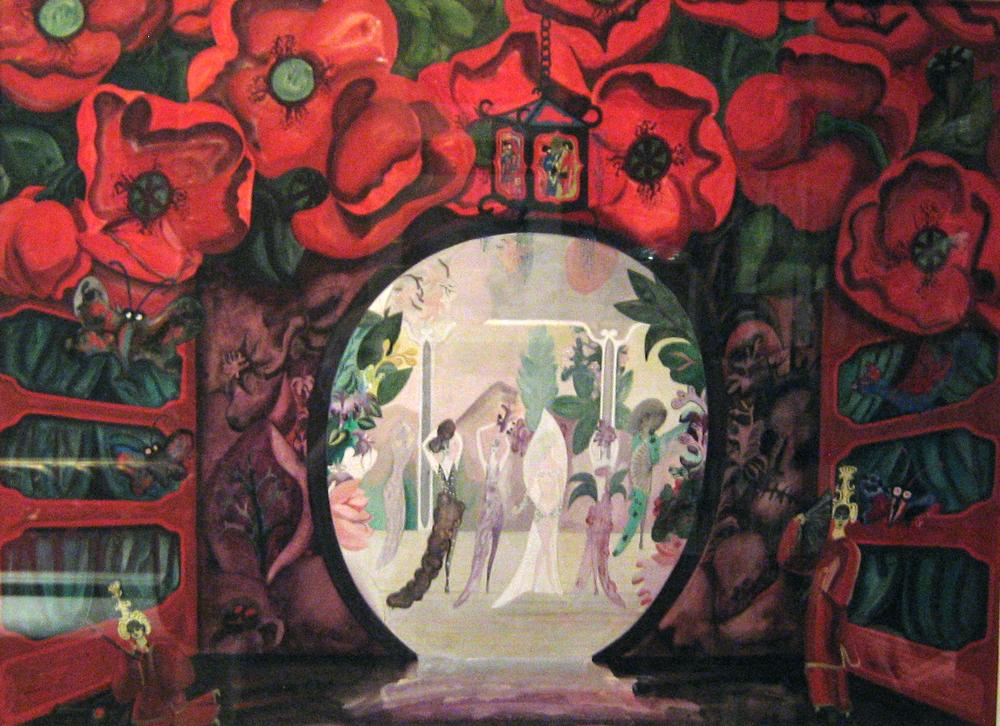
From James L. Gordon Collection and ©. (Click image for larger version)
Apparently an academic exercise, the exhibition’s organisers have been unable to trace a production of A London Ballet from 1925, depicted by Barnett Freedman. The knees-up, music hall finale, presided over by an Adam and Eve, is tantalisingly elusive.
Other photographs by Barbara Ker-Seymer include a sphinx-like Jean Cocteau and a joint portrait of Vita Sackville-West with Harold Nicholson.
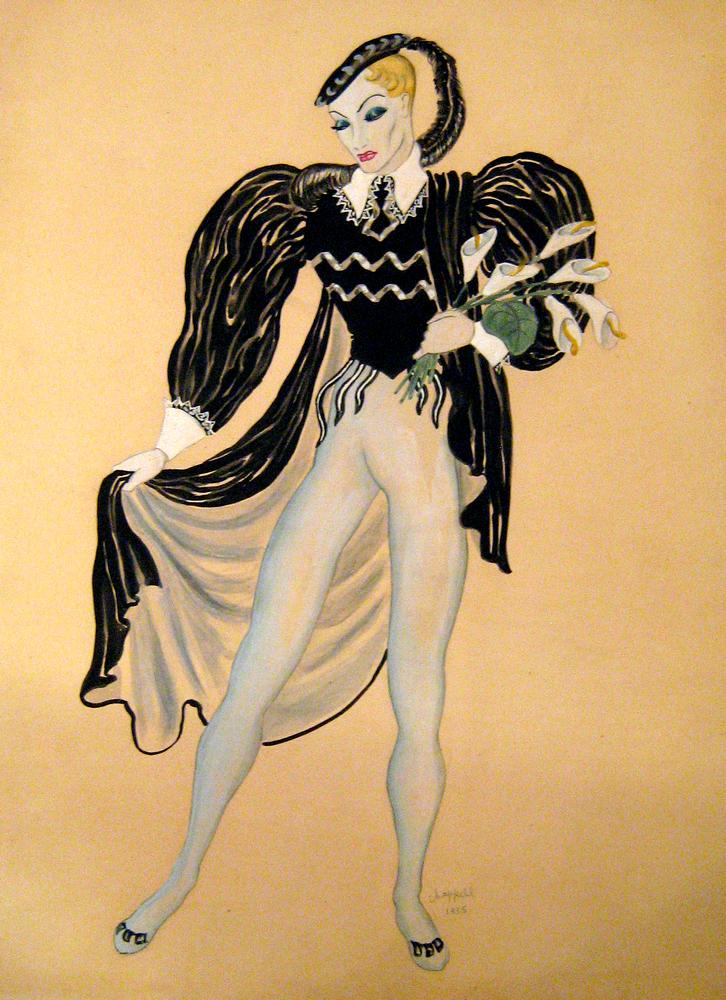
From James L. Gordon Collection and ©. (Click image for larger version
The Fry hosts a fascinating permanent collection – worth the journey – including works by Edward Bawden (several of whose theatre designs and murals for Morley College are included in this temporary exhibition), Eric Ravilious, Michael Ayrton and Grayson Perry. Illustrated by Bawden, currently displayed, is Edith Sitwell’s Popular Song, published in 1928. Three years later this famously became part of Ashton’s Façade and illustrates the rich connections of the era.










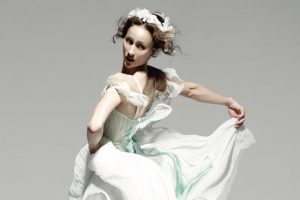




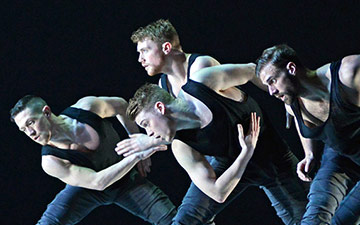

You must be logged in to post a comment.